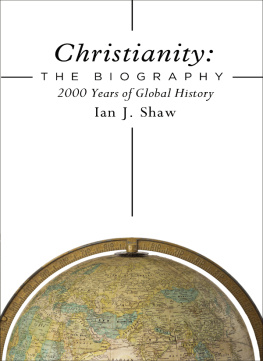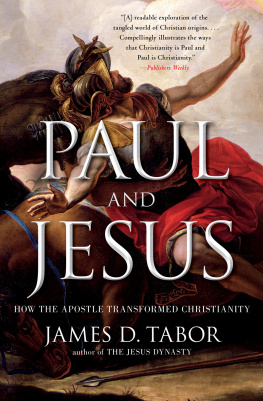Table of Contents
THIS BOOK IS DEDICATED TO THE MEMORY OF ALL CHRISTIANS, CHINESE AND FOREIGN, WHO DIED IN CHINA AS MARTYRS FOR THEIR FAITH, FROM A.D. 635 TO MODERN TIMES.
PREFACE
THE DECISION OF MONARCH BOOKS to issue a soft-cover version of Jesus in Beijing opened the door to many useful opportunities. Chief among these was a chance to correct a number of errors that had crept into the text of the first edition not only in the original writing process but also in the editing and copy-editing. I am grateful to a number of people for pointing out deficiencies in the original text, and especially to Dr. James Hudson Taylor III.
The new version of the book contains new material. One addition is an updating chapter on events concerning Christianity in China in the three years since the original version of the book went to press. Another is the transcript of a talk given by the author to an audience in Beijing in July 2004 on some of the background, motivations, and circumstances of reporting and writing the book. In the talk I made a good effort to respond to some of the criticisms that publication of the original book had evoked. The third addition is an abridged version of an article, written by an anonymous mainland Chinese Christian well-acquainted with Chinas official church criticizing the theology of Chinas most internationally recognizable Protestant Christian leader, Bishop Ding Guangxun. A fourth addition is a very useful report of an investigation by the U.S. Christian group Asia Harvest, which has close ties to China, into claims that mass arrests had followed the release in October 2003 of the first edition of this book and of the documentary The Cross .
Also, the Index for this edition has been substantially revised so that it is far more comprehensive than what appeared in the first edition. Readers who might want to refer to the contents of this book for research purposes will find it much more useful.
Finally, a very brief explanation needs to be made on the English spelling of Chinese words and names in the book. In almost all cases, I have used the pinyin system of transliteration of Chinese words and names that has been in use in the Peoples Republic of China since the 1950s. The exceptions fall into two categories: names of prominent Chinese figures who have used alternative systems of Romanization to render their names in English. Two obvious examples are Sun Yatsen and Chiang Kai-shek. These two names, in that particular spelling in English, are so commonly used as to render any attempt to refer to them in their correct Chinese spellings (Sun Zhongshan and Jiang Jieshi, respectively) more confusing than anything else.
The second category of spelling variance is that of the capital of China today, which is commonly rendered Beijing. Indeed, Beijing is the standard pinyin spelling of the Chinese name of the capital. When the Chinese Nationalist government ruled in Nanjing from 1927 until its retreat to Taiwan in 1949, the name of the city of Beijing was changed in Chinese to Beiping, and it was spelled this way in English. It would be pedantic and confusing, however, to refer to Chinas traditional capital as Beiping for just these few decades of the century.
What I have chosen to do, albeit somewhat arbitrarily, is to refer to Beijing in all historical periods before 1949 as Peking. This is because every single historical work in English used the spelling Peking for the city prior to that time, and indeed continued to use Peking rather than Beijing until the 1970s and 1980s. Nowadays, of course, Beijing is virtually standard international usage.
I would like to add that it would have been virtually impossible to correct all the mistakes in the book without the unflaggingly diligent assistance of my editor for the new edition, Charlene L. Fu. I owe her considerable gratitude.
Virginia, USA, July 2006
INTRODUCTION
I FIRST BECAME INTERESTED IN THIS STORY while working in Hong Kong in the 1970s as a correspondent for Time magazine. It was difficult for Westerners to enter China at all in that period, though I made three visits to China during 19721976. But every reporter in Hong Kong on the China-watching beat tried hard to piece together what was going on in the country from the fragmentary information available. There were, of course, the official New China (or Xinhua) News Agency stories, carefully crafted to hew to the correct political line. Like Kremlinologists of yore, many of us in Hong Kong pored over stories of such epochal events as, say, a visit to Beijing by the foreign minister of San Marino, to see which Chinese officials showed up at the official banquet. But enticing tidbits of information were also leaking out of south China through the thousands of Hong Kong Chinese and overseas Chinese who were permitted to visit relatives in China.
Many of these visitors, especially those from Hong Kong, were churchgoing Chinese Christians who snatched at any information they could about the status of fellow believers in China as the nation staggered to pull itself together after the chaos of the 19661976 Cultural Revolution. It was from such visitors that remarkable stories of an incipient Christian revival inside China began to emerge.
Later, in the mid-1980s, I lived in China for nearly two years as the Time bureau chief in Beijing. Foreigners, especially foreign reporters, were watched carefully by the Chinese government at the time. It was possible to visit privately with ordinary Chinese, but at some risk to them. I used to show up unannounced in the dilapidated home of one Christian family in north Beijing after donning a thickly padded cotton Chinese military coat, a surgical face mask, and a large fur hat and bicycling through the city streets after dark. An elderly Chinese Christian physician loved to tell me stories of peasant evangelists from the countryside who dropped by to pick up Bibles or Christian literature. Her son, a Communist Party member, was also a believer.
I returned briefly to Beijing in June 1989, in time to witness firsthand the military crackdown on protesting students and citizens in the capital on June 4. I came back to China again several times during the 1990s, at first while still with Time and later as a freelance journalist. Each time I sought out longtime contacts among Chinas Christian community or developed new ones.
The genesis of this book goes back to August 1998 when, with another reporter, Mark OKeefe, then of The Oregonian newspaper, I was introduced by a Chinese contact to top leaders of Chinas largest networks of Christians in the house churches, unregistered gatherings of Christians who wanted nothing to do with the government-approved Three-Self Patriotic Movement (TSPM) or the Catholic Patriotic Association (CPA). The secret meeting in a safe house on the outskirts of Zhengzhou, capital city of Henan Province, required elaborate arrangements for Mark and me to attend without putting at risk any of the Chinese participants. It turned out to be the first occasion on which Chinas house church leaders, sometimes referred to outside China as underground, had agreed not only to meet with reporters from Western news organizations, but also to be photographed and openly identified by their own names as well. The participants compiled their first official collective statement of opinion for the benefit of both the Three-Self and Chinas government. We later published this in the United States (See Appendix A). The document was significant not just because it was the first deliberate effort of house church network leaders to reveal themselves, but also because it showed that Chinas underground Christians, despite decades of persecution, did not consider themselves political dissidents, and in fact took pride in proclaiming their Chinese patriotism. (Specifically, they opposed political independence for either Tibet or Taiwan.)











